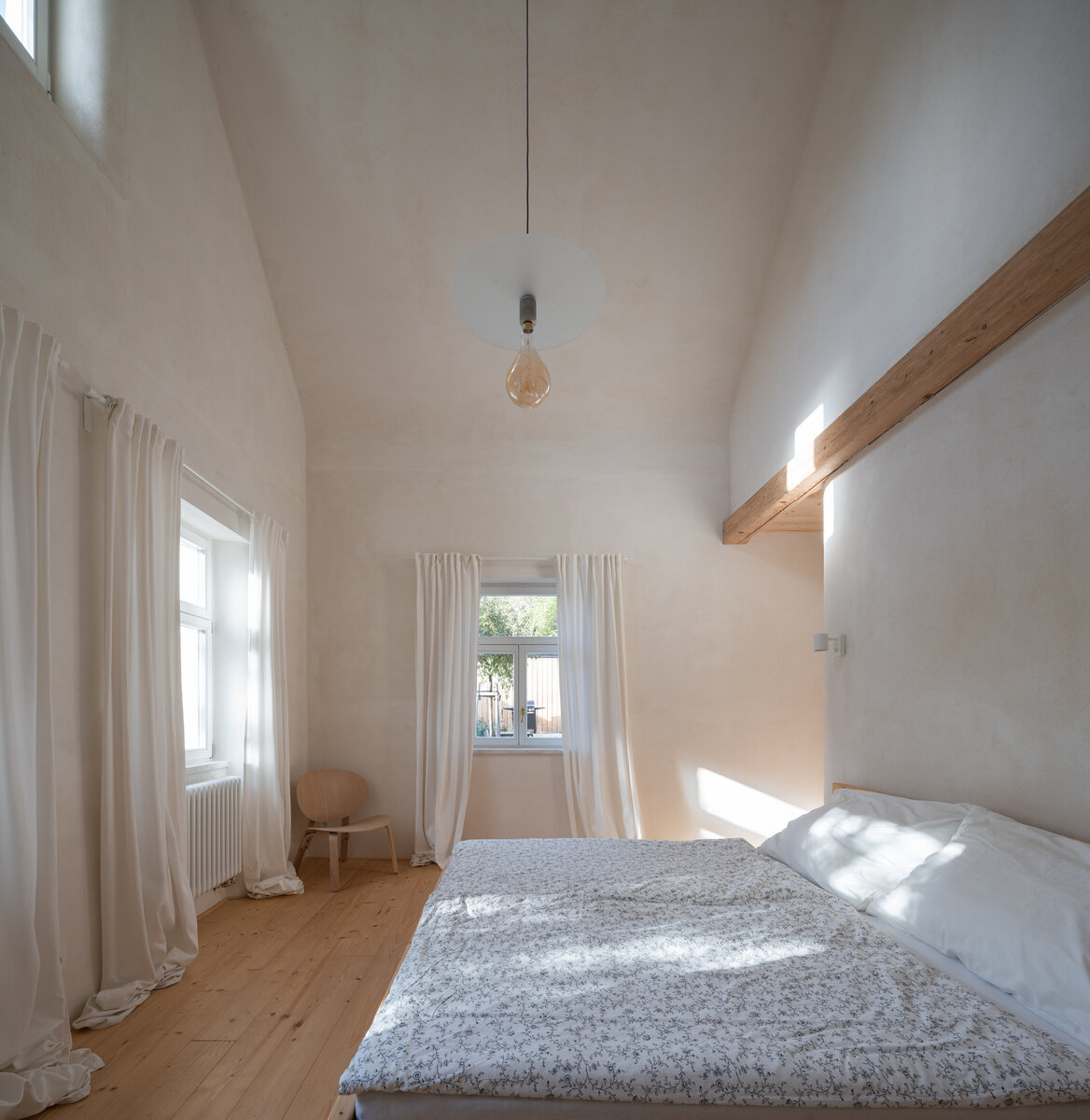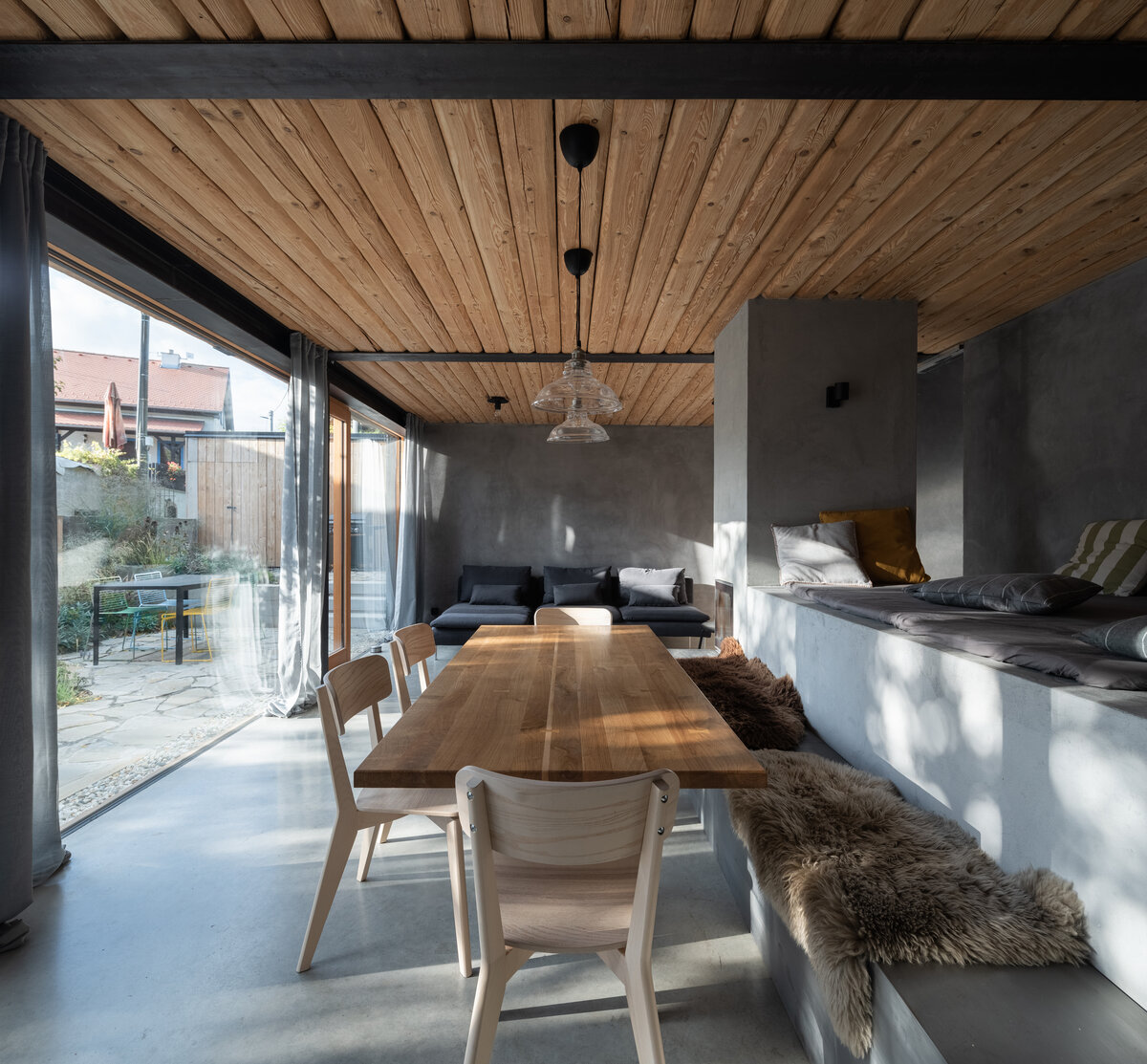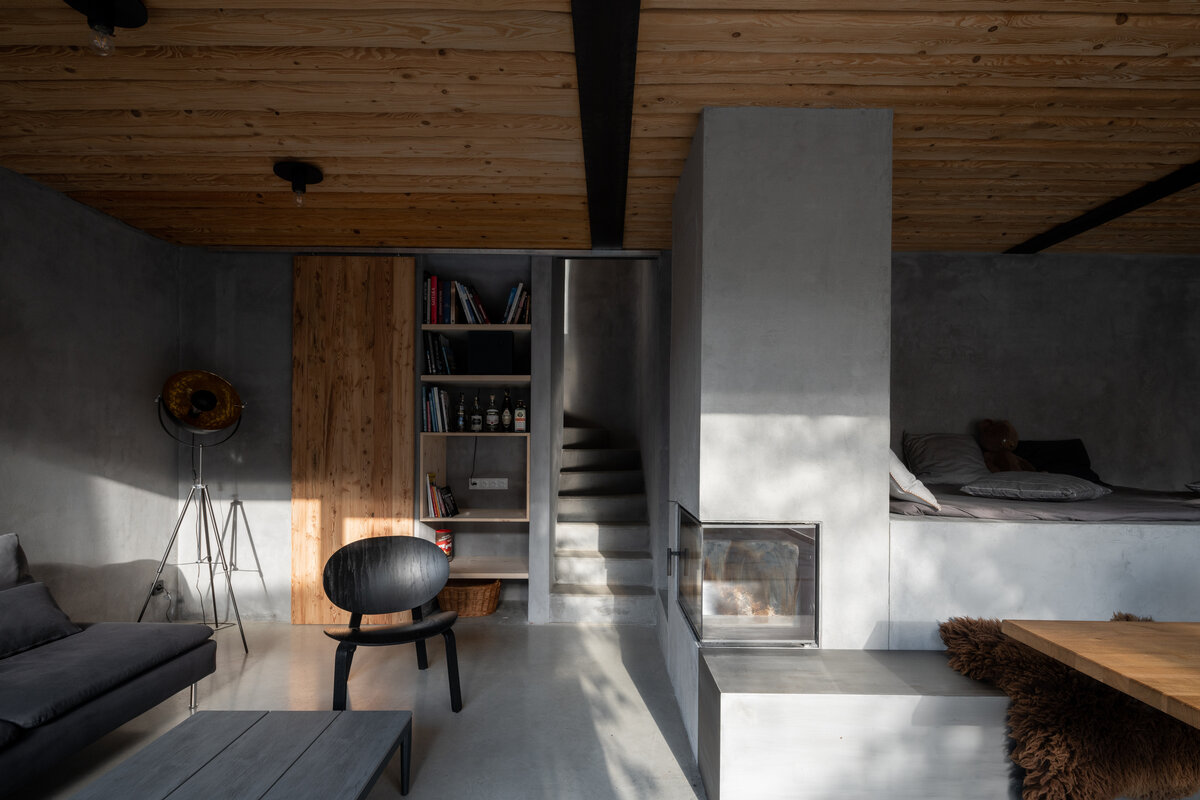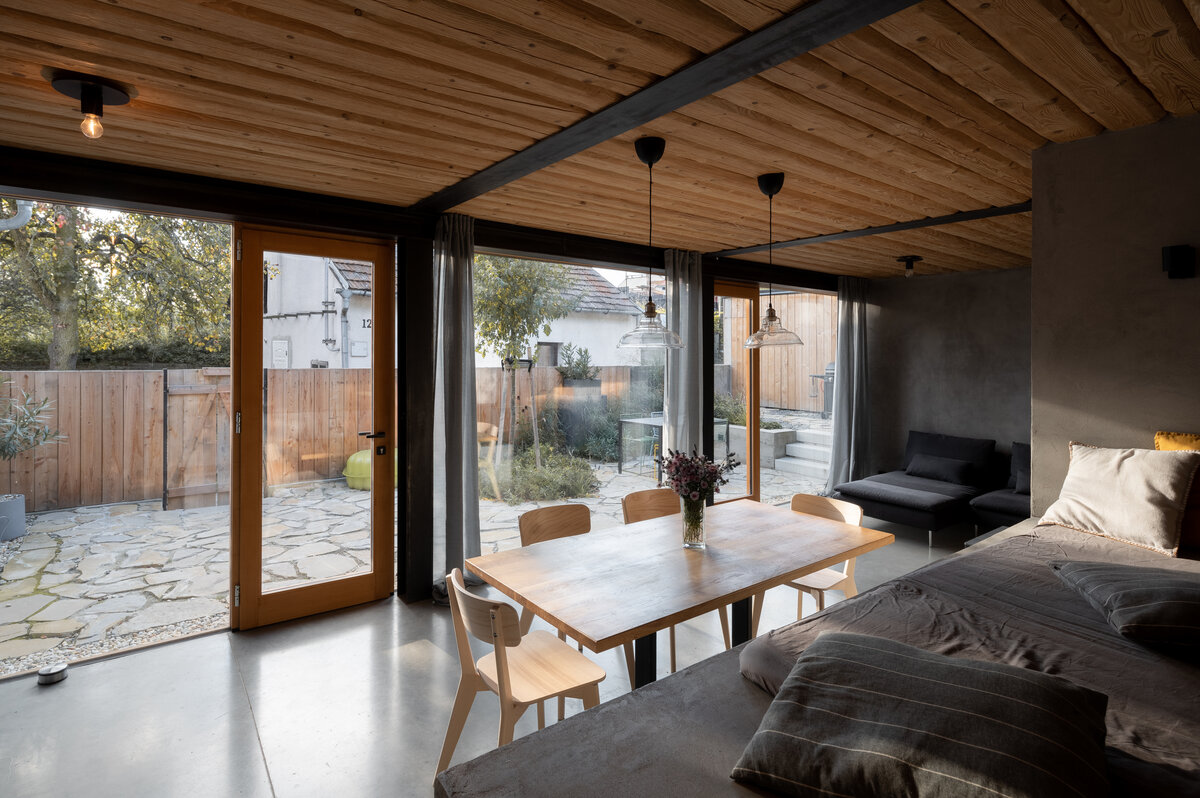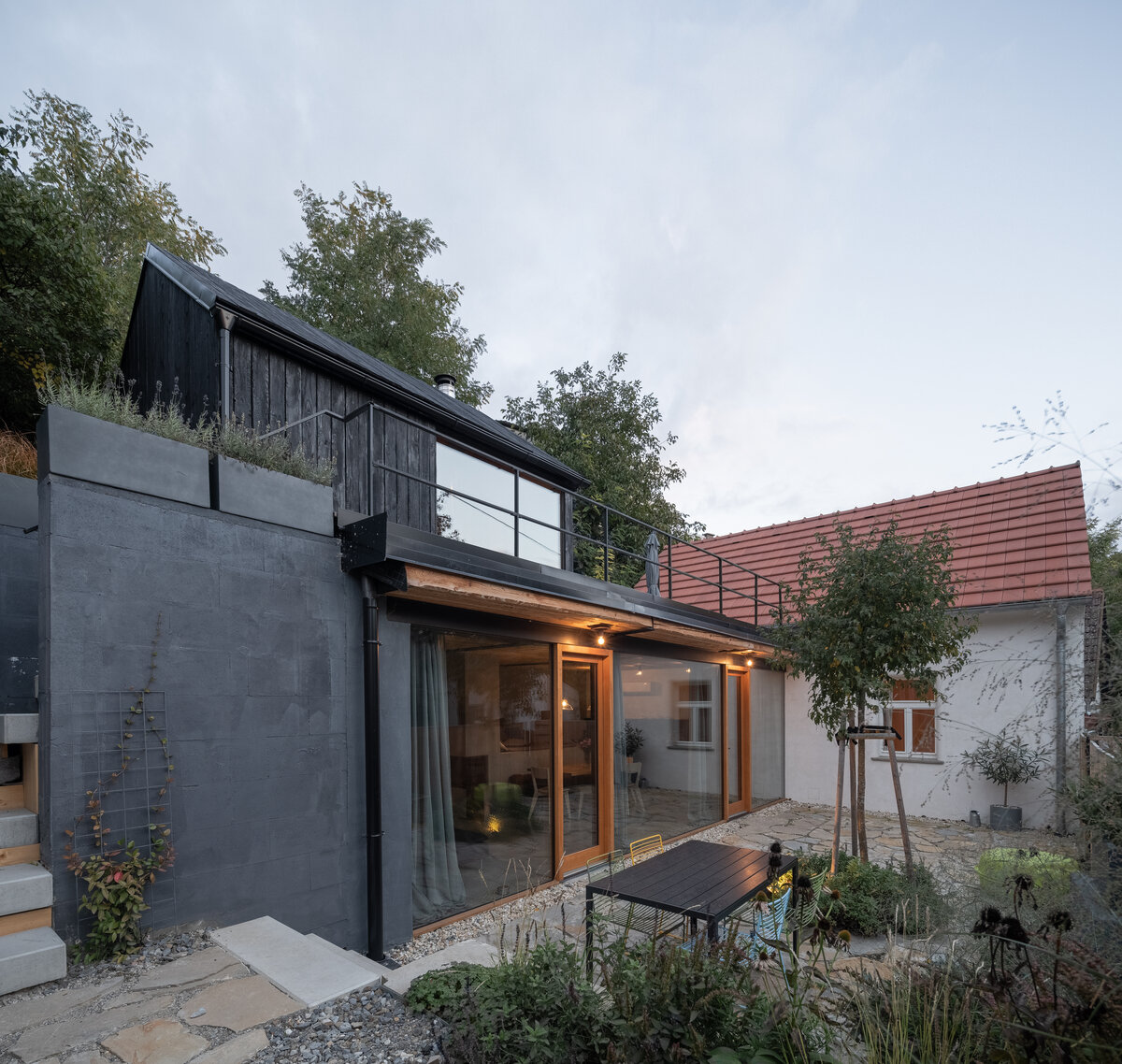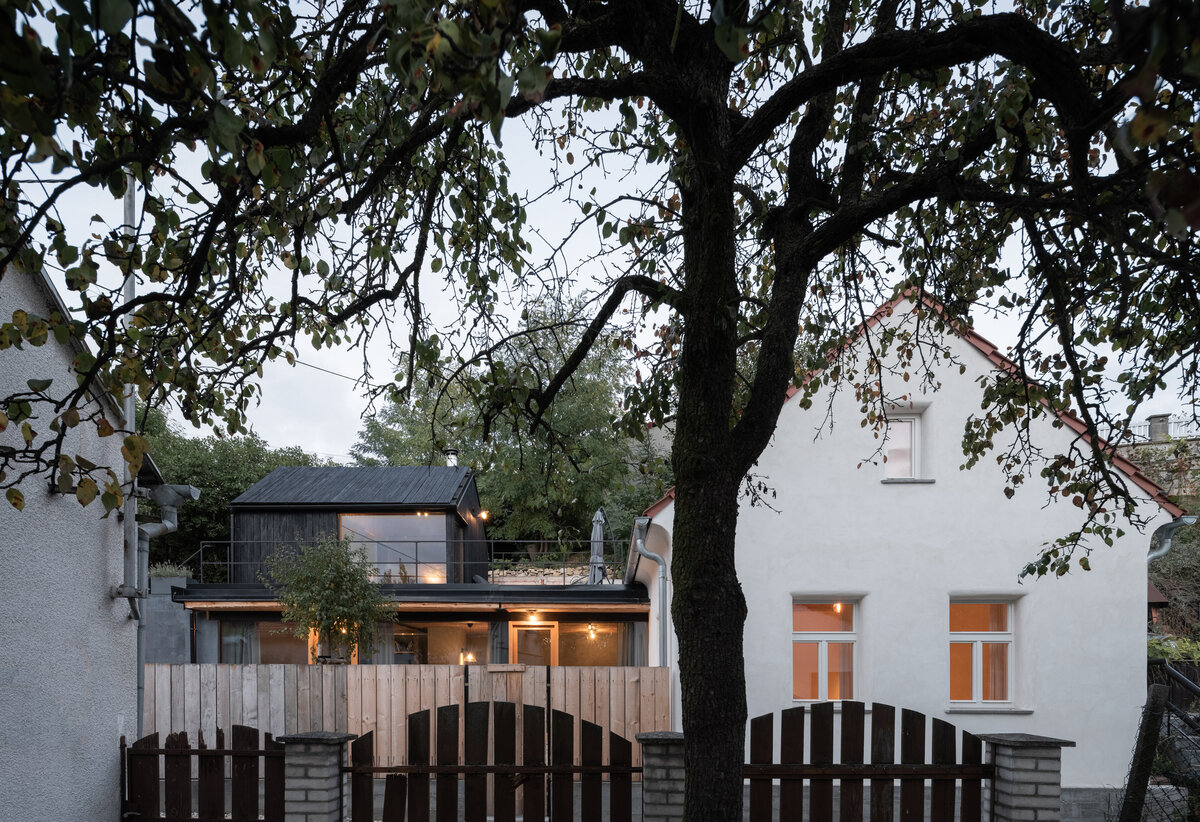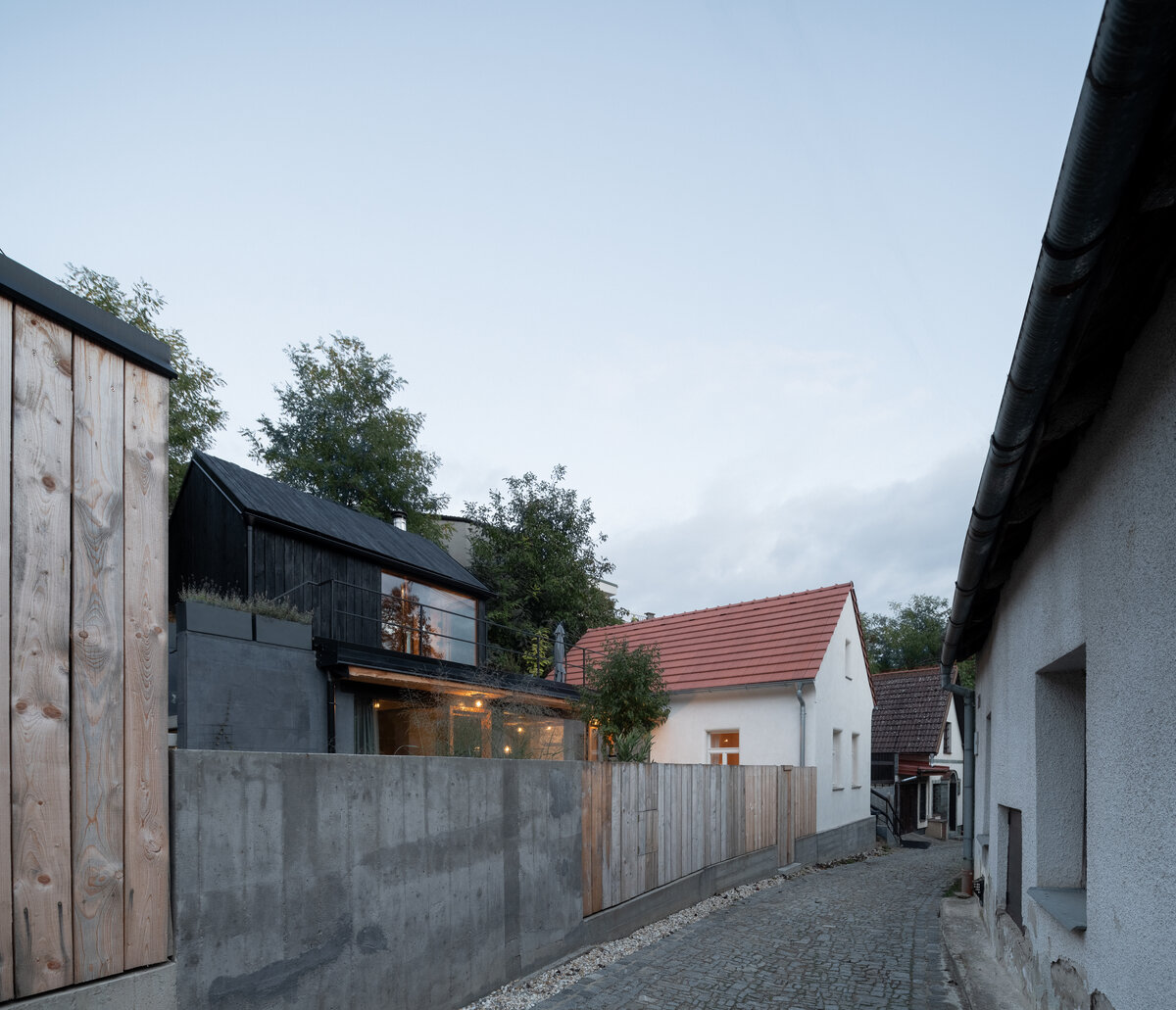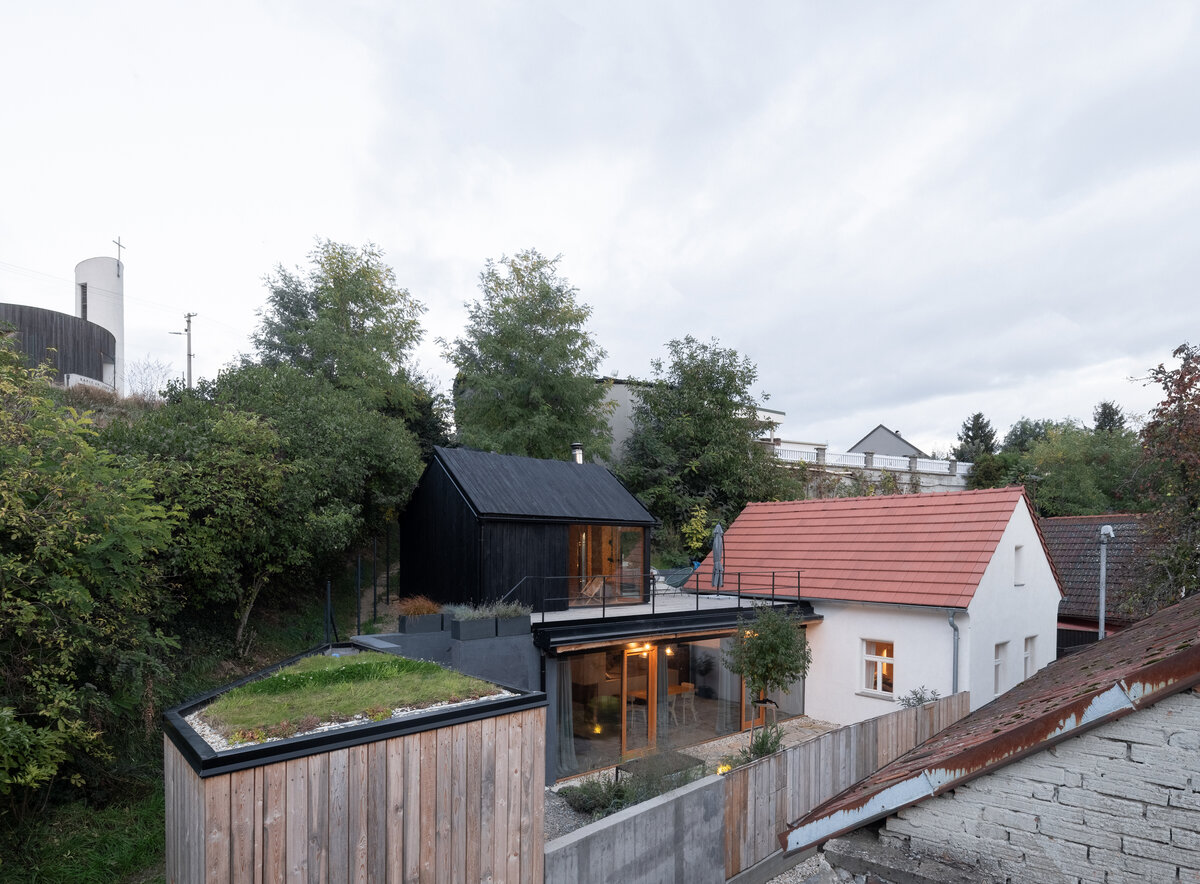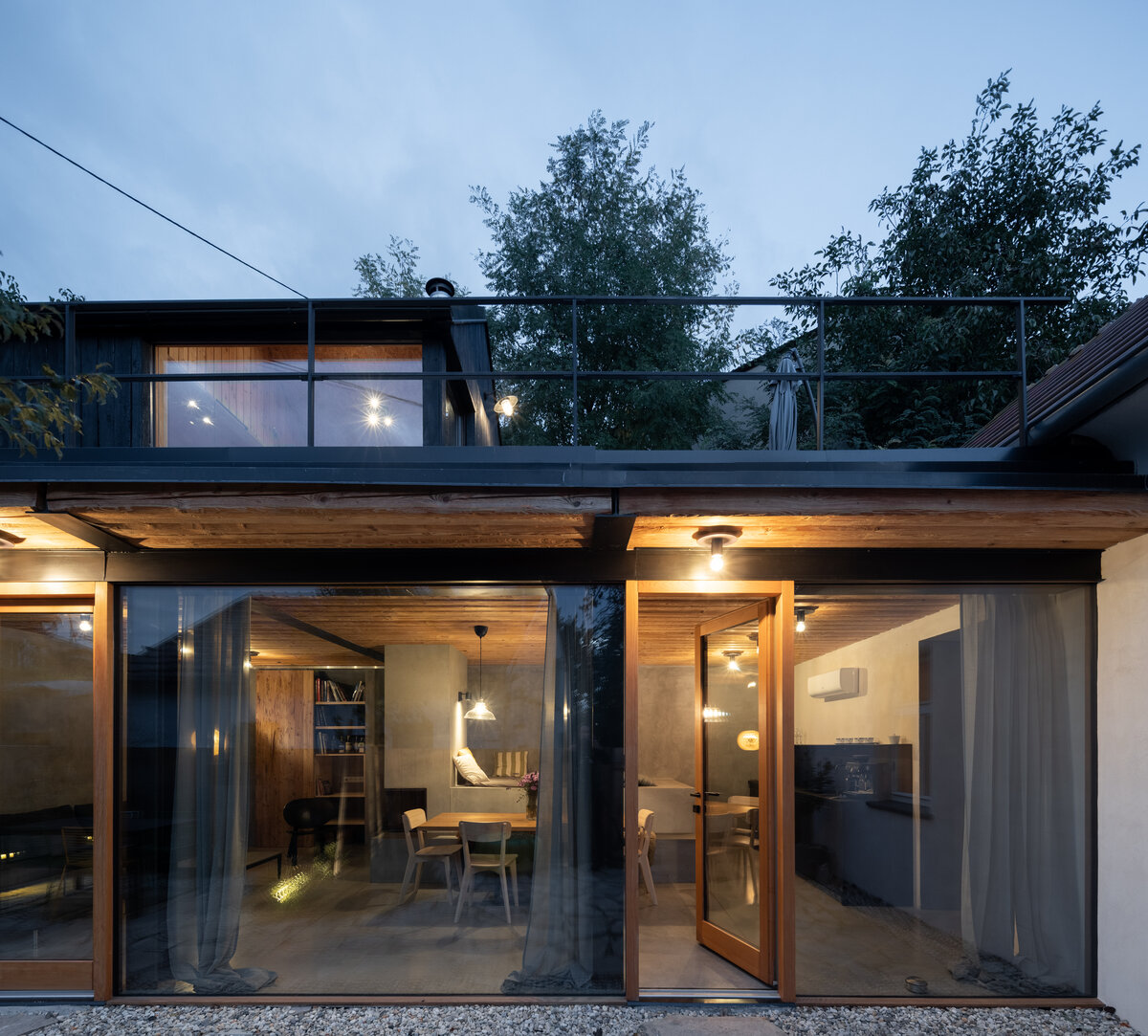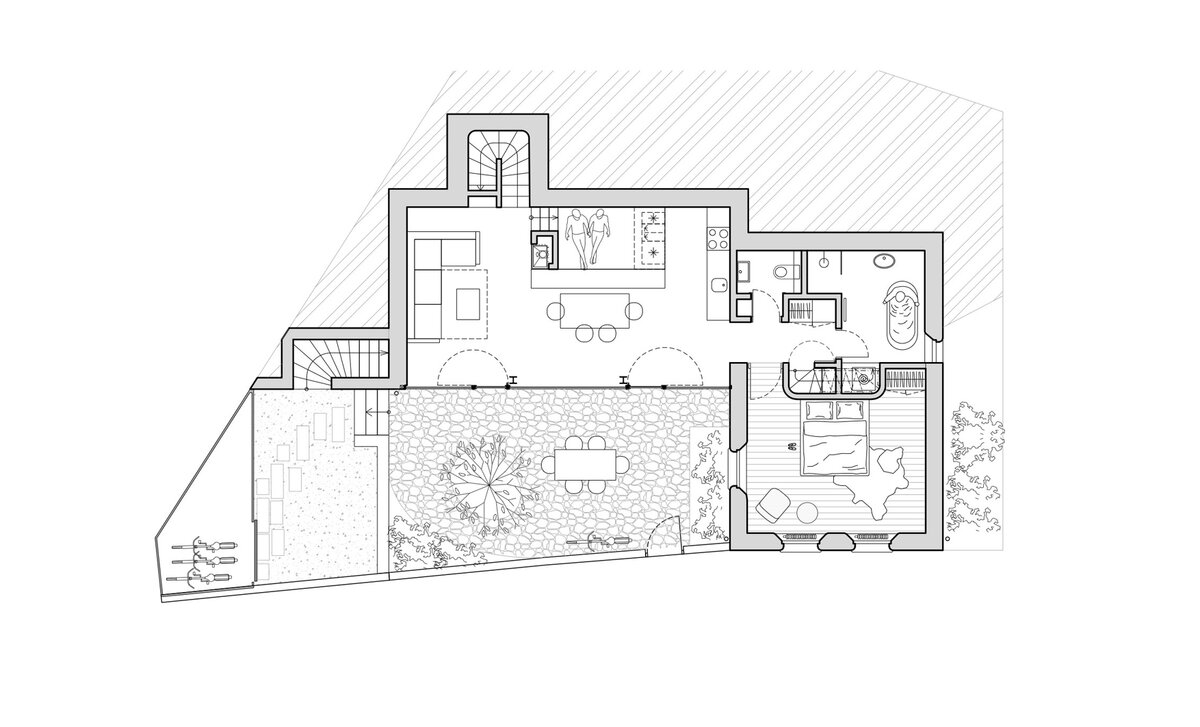| Author |
SENAA architekti / Václav Navrátil, Jan Sedláček, Kateřina Zabadalová, Jan Gadziala |
| Studio |
|
| Location |
Bukovany 291,
Bukovany 696 31 |
| Investor |
Jana Navrátilová |
| Supplier |
Subdodavatelsky |
| Date of completion / approval of the project |
April 2021 |
| Fotograf |
|
Captivating building sensitively set in the environment of a wine village in Moravia. Atelier SENAA architects divided the weekend house into several buildings, in which modern elements are combined with traditional methods.
The house lies in a pleasant wine cellar lane with limited access for construction equipment. We had to abandon the original reconstruction plan after the actual condition was discovered. The new building respects the footprint and shape of the old house.
The house could be conceptually divided into several layout and structural parts. The bedroom, bathroom and toilet occupy the brick part - originally a living area. The glazed living room stands on the site of the former goat sheds and is structurally a steel structure. The superstructure is made of wood and houses a sauna with a relaxation area.
The house uses every bit of the steep sloping plot. On the 230m2 area, in addition to the house itself, there is a bike shed and above the roof terrace, there is a swimming pool tucked into the slope with a panoramic view of the surroundings.
The house has a traditional morphology but combines modern details with historical technologies. For example, we set a hand-hewn loft ceiling into a steel structure, which continues into frameless large-scale glazing. The interior plaster is coloured and polished without any additional surface treatment. Another distinctive softening element are the rounded corners of the window lining and lintels. We also applied a traditional Japanese folk technique of charred wood shou-sugi-ban and the entire superstructure of the sauna house on the roof terrace is treated in this way.
The mixture of the variety of details and the overall layout creates an architectural experience of the space and shows the possibility of implementing modern architecture in the historical context of the cellar lane.
Green building
Environmental certification
| Type and level of certificate |
-
|
Water management
| Is rainwater used for irrigation? |
|
| Is rainwater used for other purposes, e.g. toilet flushing ? |
|
| Does the building have a green roof / facade ? |
|
| Is reclaimed waste water used, e.g. from showers and sinks ? |
|
The quality of the indoor environment
| Is clean air supply automated ? |
|
| Is comfortable temperature during summer and winter automated? |
|
| Is natural lighting guaranteed in all living areas? |
|
| Is artificial lighting automated? |
|
| Is acoustic comfort, specifically reverberation time, guaranteed? |
|
| Does the layout solution include zoning and ergonomics elements? |
|
Principles of circular economics
| Does the project use recycled materials? |
|
| Does the project use recyclable materials? |
|
| Are materials with a documented Environmental Product Declaration (EPD) promoted in the project? |
|
| Are other sustainability certifications used for materials and elements? |
|
Energy efficiency
| Energy performance class of the building according to the Energy Performance Certificate of the building |
B
|
| Is efficient energy management (measurement and regular analysis of consumption data) considered? |
|
| Are renewable sources of energy used, e.g. solar system, photovoltaics? |
|
Interconnection with surroundings
| Does the project enable the easy use of public transport? |
|
| Does the project support the use of alternative modes of transport, e.g cycling, walking etc. ? |
|
| Is there access to recreational natural areas, e.g. parks, in the immediate vicinity of the building? |
|
